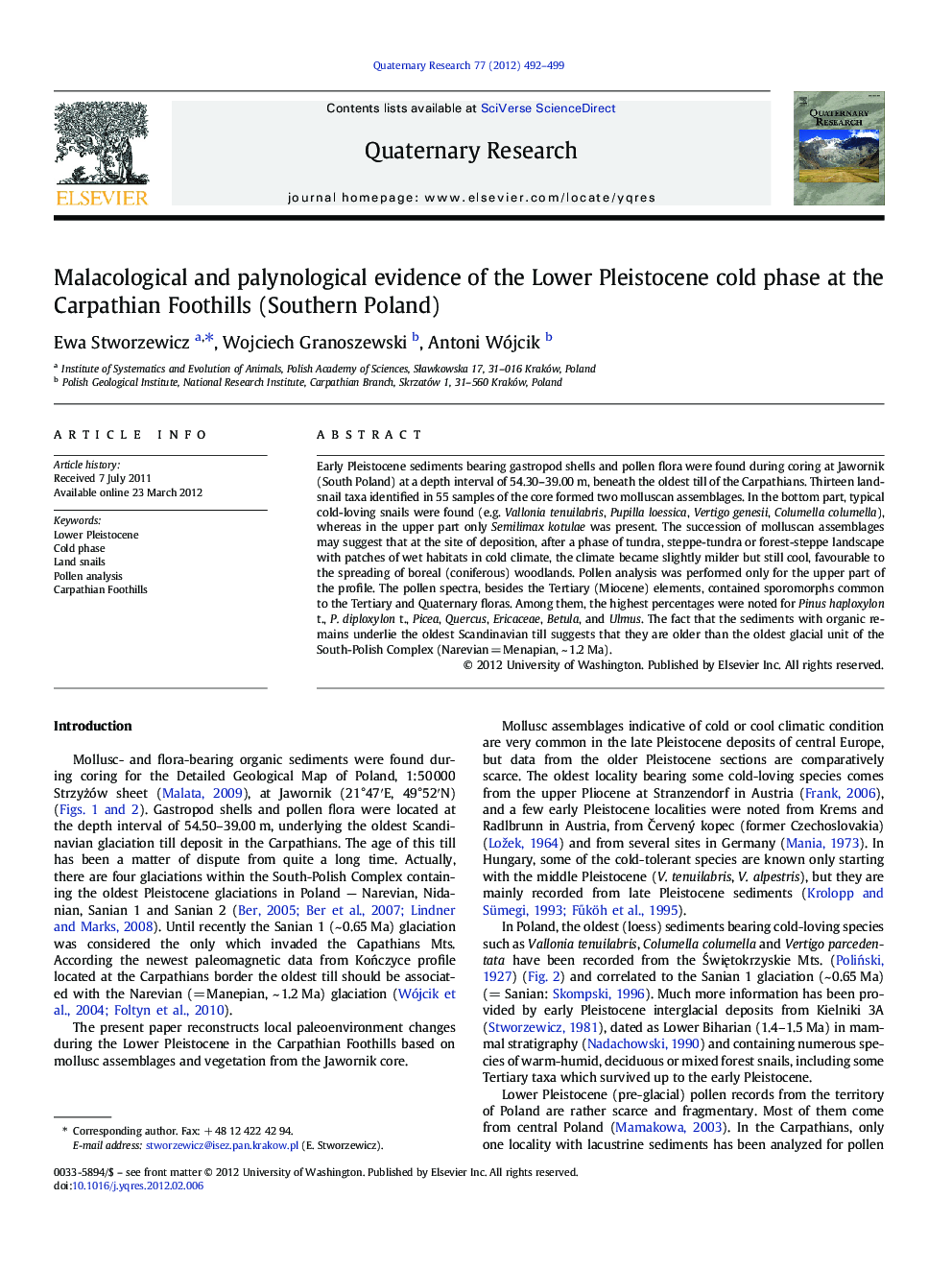| کد مقاله | کد نشریه | سال انتشار | مقاله انگلیسی | نسخه تمام متن |
|---|---|---|---|---|
| 1045748 | 944831 | 2012 | 8 صفحه PDF | دانلود رایگان |
عنوان انگلیسی مقاله ISI
Malacological and palynological evidence of the Lower Pleistocene cold phase at the Carpathian Foothills (Southern Poland)
دانلود مقاله + سفارش ترجمه
دانلود مقاله ISI انگلیسی
رایگان برای ایرانیان
کلمات کلیدی
موضوعات مرتبط
مهندسی و علوم پایه
علوم زمین و سیارات
زمین شناسی
پیش نمایش صفحه اول مقاله

چکیده انگلیسی
Early Pleistocene sediments bearing gastropod shells and pollen flora were found during coring at Jawornik (South Poland) at a depth interval of 54.30-39.00 m, beneath the oldest till of the Carpathians. Thirteen land-snail taxa identified in 55 samples of the core formed two molluscan assemblages. In the bottom part, typical cold-loving snails were found (e.g. Vallonia tenuilabris, Pupilla loessica, Vertigo genesii, Columella columella), whereas in the upper part only Semilimax kotulae was present. The succession of molluscan assemblages may suggest that at the site of deposition, after a phase of tundra, steppe-tundra or forest-steppe landscape with patches of wet habitats in cold climate, the climate became slightly milder but still cool, favourable to the spreading of boreal (coniferous) woodlands. Pollen analysis was performed only for the upper part of the profile. The pollen spectra, besides the Tertiary (Miocene) elements, contained sporomorphs common to the Tertiary and Quaternary floras. Among them, the highest percentages were noted for Pinus haploxylon t., P. diploxylon t., Picea, Quercus, Ericaceae, Betula, and Ulmus. The fact that the sediments with organic remains underlie the oldest Scandinavian till suggests that they are older than the oldest glacial unit of the South-Polish Complex (Narevian = Menapian, ~ 1.2 Ma).
ناشر
Database: Elsevier - ScienceDirect (ساینس دایرکت)
Journal: Quaternary Research - Volume 77, Issue 3, May 2012, Pages 492-499
Journal: Quaternary Research - Volume 77, Issue 3, May 2012, Pages 492-499
نویسندگان
Ewa Stworzewicz, Wojciech Granoszewski, Antoni Wójcik,